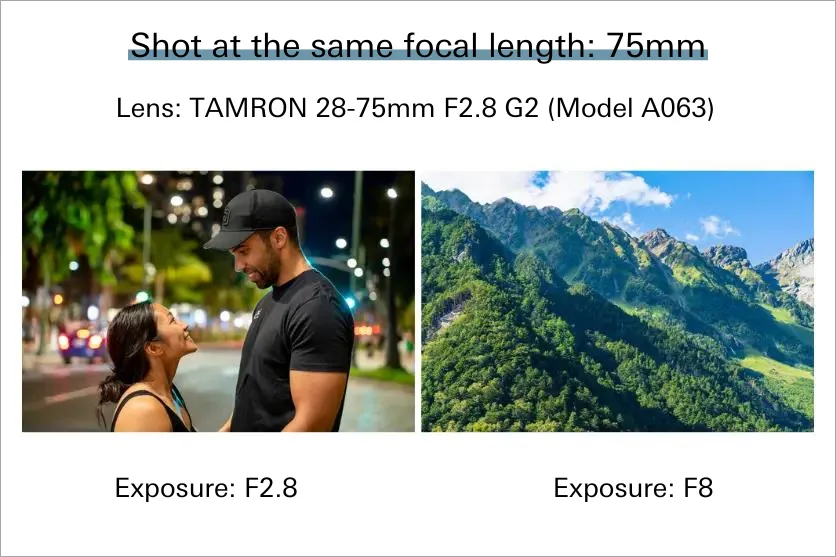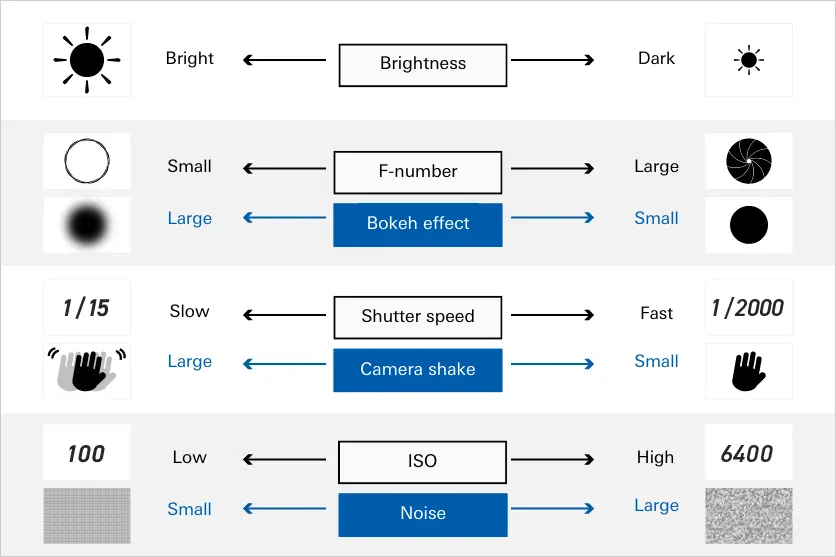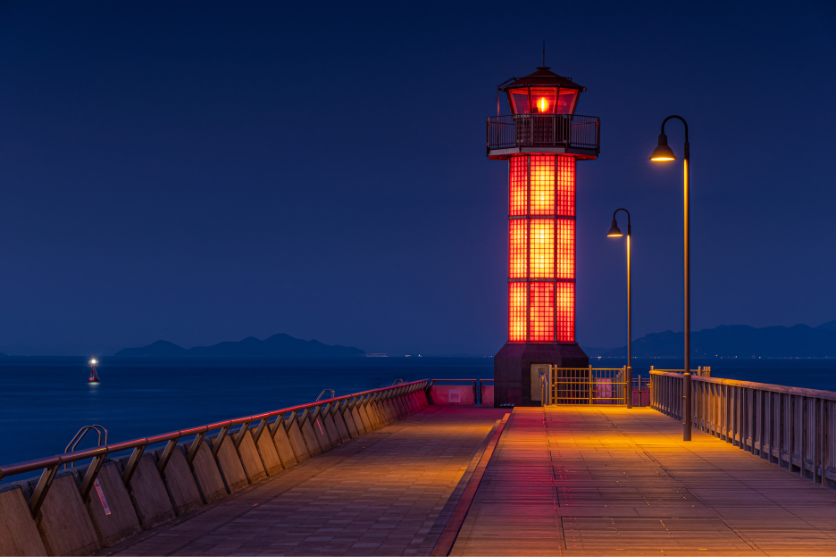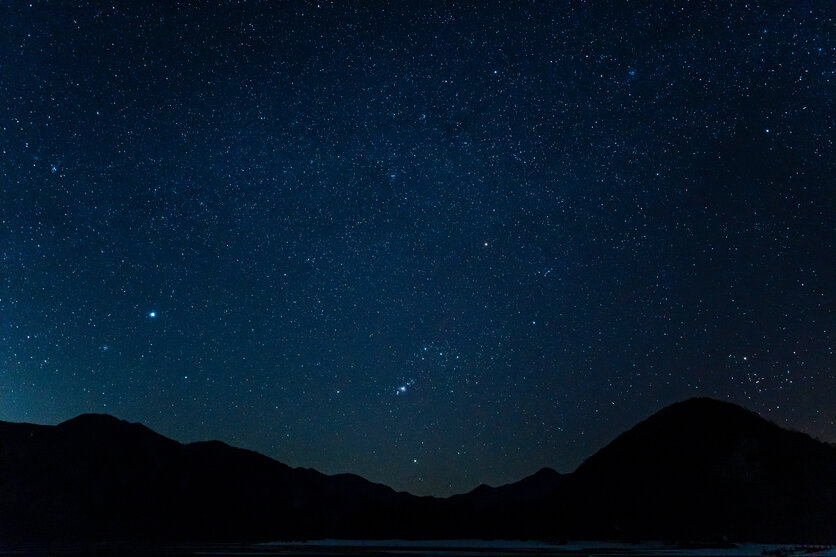September 30, 2024
What is F-number (aperture)? A comprehensive explanation including example settings and the relationship between aperture, shutter speed and ISO
What is F-number (aperture)? A comprehensive explanation including example settings and the relationship between aperture, shutter speed and ISO


The F-number (aperture) plays a big part in taking an attractive photo. F-number is an element strongly associated with how bright an image is and the degree of bokeh in the background.
There are optimum F-number settings for different shooting scenarios, from portraits to landscapes, astrophotography and sports events. By mastering the use of F-numbers, you will be able to take beautiful and impressive photos. In this article, we will explain in detail about the approaches and selection of F-numbers in various scenarios and how they affect your photos.
In still photography, “F-number” is an important element for controlling the amount of light and degree of bokeh. Aperture opens and closes to precisely adjust the amount of light that passes through it. The numbers that indicate the degree of aperture are referred to as “F-numbers” or “aperture values”.
F-number (F) is calculated by dividing the focal length of a lens (f) by its effective aperture diameter (D). Therefore, F-number can be expressed as F=f/D.
If the figure becomes small, it is the same as saying that the effective aperture (D) of a lens is large. As a result, the amount of light passing through the lens increases. For this reason, the larger the F figure becomes, the less light passes through the lens.
In addition, there are two types of apertures: polygonal aperture and circular aperture. The circular aperture produces beautiful bokeh against the small point of light sources such as streetlights and other lightings. TAMRON adapts a multiple-blade diaphragm to lenses, that contributes to produce beautiful circular bokeh.
F-number is a basic metric indicating the light-gathering ability of a lens, and is one of the basic approaches to configuring settings when taking a photo, the shutter speed has to be adjusted corresponding to F-number to acquire the right balance of the exposure and also the degree of bokeh varies depending on F-number as well.
For example, when shooting in a dark environment or night scenes, choosing a lens with smaller F value will make it easier to gather a lot of light. Gathering a lot of light has various benefits. For instance, it allows you to increase the shutter speed to reduce camera shake, or keep the ISO low to maintain high image quality.
Working in reverse, when the F value is larger, you may need to select a slower shutter speed to let in more light, but will increase the risk of camera shake. Care is also needed with setting ISO, as setting the value too high can lead the degradation of image quality.
The F-number of a lens when its aperture is wide open is known as the “maximum” or “wide-open” aperture.
This maximum aperture indicates that the lens is letting in the maximum amount of light possible. The greater the wide-open aperture, the easier it is for a lens to shoot in low-light conditions and to smooth out the background. When shooting in darker environments or capturing high-speed movements, this bigger light-gathering ability becomes a big advantage.
The look or mood of a photo can change dramatically depending on the aperture settings. Specifically, when a smaller number of F value is set, the amount of bokeh in the background increases, and if a larger the value becomes reduces the amount of bokeh.
This phenomenon occurs because it changes the range of what is in focus called “depth of field”, the range over which items are in focus. As a result, you can control the range in focus and out of focus: an image focused just on the main subject or an image focused all the way to infinity.
This means when the small F value is chosen, a shallower depth of field is produced. This allows you to emphasize only specific parts of an image and blur the rest. By understanding how to control the F-number, you can take photos that express the degree of bokeh you intend.
It will be useful to have your image of what shutter speed and what ISO to use based on a certain F-number.
When a smaller F-number is selected, there is a greater amount of light because more light reaches the sensor. As a result, the shutter speed can be increased, or a lower ISO can be set. This combination has the effect of reducing camera shake and minimizing noise in images. This is also an effective way to make a subject stand out, because the background bokeh is also emphasized.
On the other hand, when a larger F-number is selected, since the amount of light is reduced and less light will reach the sensor, you should reduce the shutter speed, set a higher ISO, or both. However, since a lower shutter speed can induce camera shake, the use of a tripod is recommended. Additionally, since high ISO settings can increase the amount of noise in your images, you should find your own best combination through a repeated process of trial and error.
If you put your camera body to aperture priority mode and select an F-number, the camera will automatically adjust the shutter speed setting. You should try this mode first, as all you have to do is to decide the F-number corresponding to bokeh effect and then release the shutter.
Basically, the larger figure the F-number is the slower the shutter speed, and the smaller figure the F-number is, the faster the shutter speed. As a slow shutter speed can make it easier for camera shake to occur, if this is a concern you should choose a smaller figure F-number.
With many zoom lenses, the maximum aperture changes as the focal length moves from the wide end (zoomed-out) to the telephoto end (zoomed-in). Normally, the more you zoom in (go telephoto) the F-number value will become larger. But for lenses with a fixed maximum aperture (constant F-number), the maximum aperture is kept the same throughout the zoom range.
The greatest advantage of these lenses is that it is much easier to adjust shutter speed and ISO. As the shutter speed does not change when the lens is zoomed in or out and the same amount of light can be maintained even when shooting at the telephoto end, it is possible to capture clear images utilizing bokeh effects without having to increase ISO.
These fixed maximum aperture (constant F-number) lenses flexibly adapt to shooting conditions and allow you to capture consistent images. That's why they are often favored by professional photographers and advanced users.
-
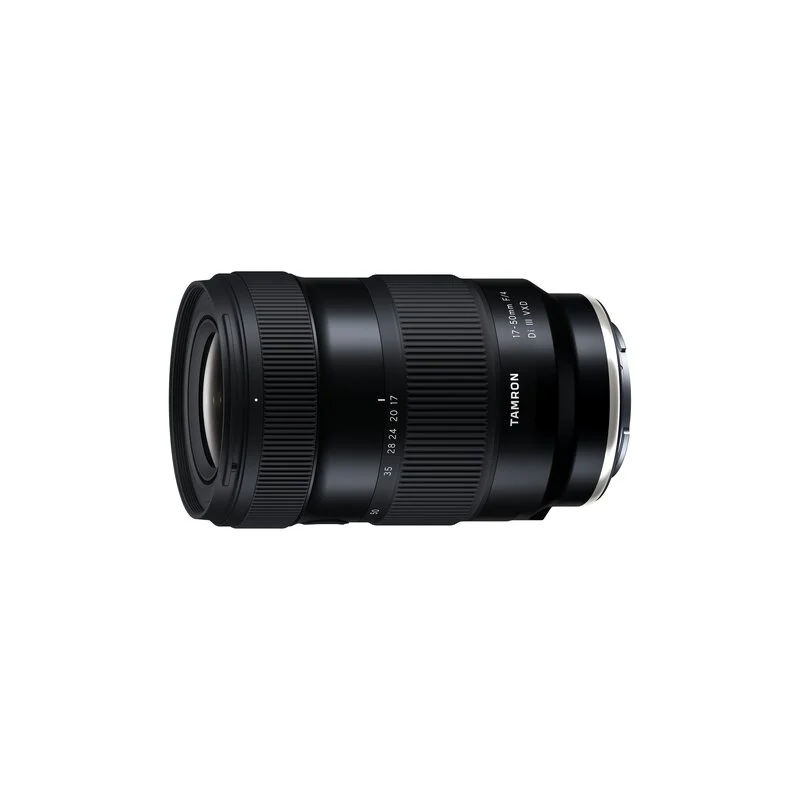
-
17-50mm F/4 Di III VXD a068(Model )
The 17-50mm F/4 Di III VXD (Model A068)It's the world’s first lens covering from ultra wide-angle 17mm to the standard 50mm focal length. The highly-compact TAMRON 17-50mm F/4 Di III VXD (model a068) for Sony E-mount full-frame mirrorless cameras offers maximum versatility for still and video creators. From landscapes to living rooms, this lens captures all that you see.
As a photo will turn out vastly different depending on subjects, environment and camera settings, there is no F-number to fit for all occasions. However, if you have a rough image of at what environment you will shoot and what you want to capture in advance, you can be prepared and start shooting without hesitation.
For example, when you want to emphasize the subject and blur the background, you can enhance the bokeh effects by selecting a smaller value F-number. On the other hand, when you want to capture a wide view in crisp detail to the edges of the image, such as with landscape photography, a larger value F-number is appropriate.
Next we will share some examples of F-number settings based on different subjects, and introduce some recommended lenses.
Since one of the attractions of portrait photography is to make the person stand out by taking advantage of the blur in the fore sight and far sight, it is recommended to shoot at close to a maximum F-number.
Generally, F2.8 for standard zoom lenses and F1.4 for prime lenses are commonly used. Using an F-number close to the maximum aperture like this will enhance the bokeh effect and make the subject stand out.
The choice of lens also greatly affects the quality of your portraits. For example, TAMRON 35-150mm F2-2.8 (Model A058) can cover a wide range of focal lengths from wide-angle to telephoto with a single lens, and it provides wide-open apertures of F2 at the wide end and F2.8 at the telephoto end.
Thanks to the full open aperture of the lens, even if you select a fast shutter speed to suppress camera shake or a low ISO to curb noise, you will be able to photograph your subject in sufficient exposure level and vivid detail.
-
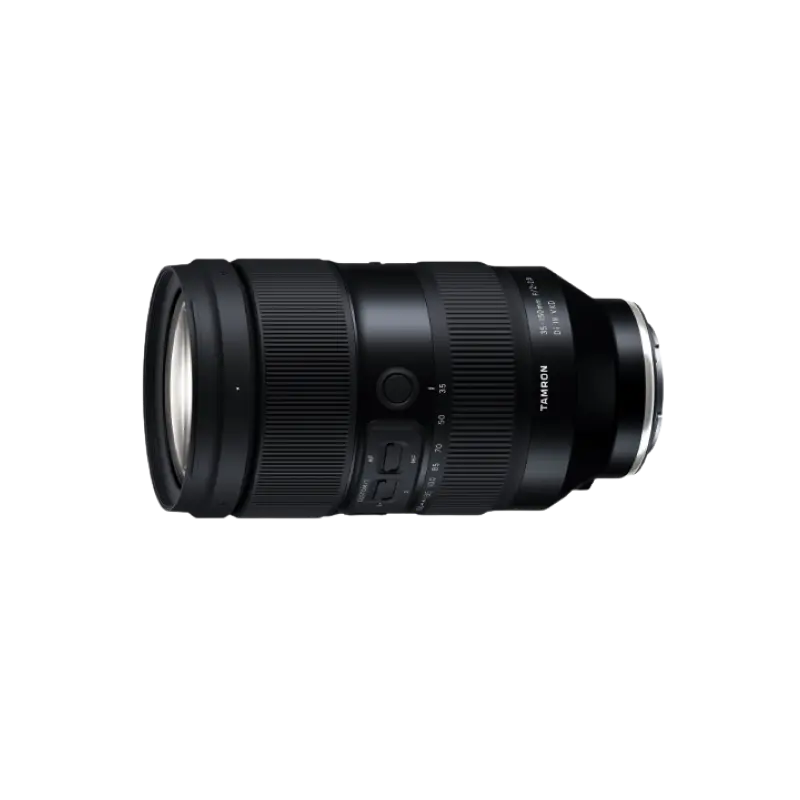
-
35-150mm F/2-2.8 Di III VXD a058(Model )
The 35-150mm F/2-2.8 Di III VXD (Model A058) is a high resolution travel zoom lens that covers everything from the 35mm wide angle to the 150mm telephoto focal length, the first zoom lens achieving an aperture of F2 at the wide angle end. It has a groundbreaking fast-aperture and utilizes the linear motor focus mechanism VXD (Voice-coil eXtreme-torque Drive), thereby achieving high speed, high precision autofocusing. The innovative lens design enabled us to greatly improve the lens's grip and functionality. The software, developed in-house, enables to easily customize functions and to update firmware.
In landscape photography, you want to capture beautiful nature and cityscapes with exquisite detail over a wide area. Therefore, to minimize blur and increase depth of field, try using a large value F-number (stop down the aperture). A specific F-number between F8 and F11 is often used. This allows you to capture all parts of the image clearly, from the foreground to the background.
However, avoid using an unnecessarily large F-number. This is because an excessively large F-number may deteriorate resolution due to aberrations in the lens and diffraction of light. As a rule of thumb, details are often blurred at F-numbers larger than F16, so try a smaller F-number at such time.
-

-
50-400mm F/4.5-6.3 Di III VC VXD a067(Model )
The 50-400mm F/4.5-6.3 Di III VC VXD (Model A067) is an ultra-telephoto zoom lens with an 8x zoom starting at 50mm at the wide-angle end and compatible with full-frame mirrorless cameras. The lens delivers uncompromised high image quality over the entire 50-400mm focal length range, yet is as compact and lightweight as a 100-400mm class lens. Equipped with the VXD mechanism and the VC mechanism, the lens can quickly focus on the subject's movement when shooting sports and wild birds. The 50-400mm F4.5-6.3 is a new ultra-telephoto zoom lens that combines unparalleled image quality and mobility.
When photographing night scenes, as in landscape photography, you want to capture fine detail. Therefore, as with landscape photography, it is common to set the F-number between F8 and F11.
However, in night photography, adjusting ISO and shutter speed is also very important. If the F-number is set between F8 and F11, you will need to increase the ISO or slow down the shutter speed to obtain the necessary exposure level. Use a tripod to minimize camera shake, but be careful to balance this with noise.
-

-
The 17-70mm F/2.8 Di III-A VC RXD b070(Model )
The 17-70mm F/2.8 Di III-A VC RXD (Model B070) is a large-aperture standard zoom lens for APS-C format mirrorless cameras. With a focal length range of 17mm to 70mm (a full-frame equivalent of 25.5-105mm) for daily use, this achieves a 4.1x zoom. The optical design ensures high resolution and high contrast not just in the center of the image but also in corners and at the edges. The quiet AF drive motor and the VC image stabilization mechanism facilitate hand-held shooting. In addition, by counteracting focus breathing, the 17-70mm F2.8 empowers users' expression of their creative intentions to the fullest degree. This highly practical lens allows you to easily enjoy the high image quality of a large F2.8 aperture for both still and video shooting.
In order to capture the light of the Milky Way, shooting stars, and distant stars, the F-number is often set to a value close to the maximum aperture, such as F2 to F2.8. This setting allows as much light as possible to be captured, and the stars can be clearly seen in their brilliance.
The approach to ISO and shutter speed is the same as for shooting night views, but in the case of long exposures, care is required as the rotation of the earth will cause the image to drift. Trial and error may be required to get close to the image you want.
-

-
11-20mm F/2.8 Di III-A RXD b060(Model )
The 11-20mm F/2.8 Di III-A RXD (Model B060) is the world's first compact, lightweight F2.8 ultra wide-angle zoom lens for Sony E-mount APS-C mirrorless cameras. Can be a great choice for video shooting.
Children's sports events are great chances to capture precious memories. In addition to their own children, parents want to get shots together with their friends and wider shots that convey the overall atmosphere.
To achieve this, it is necessary to suppress blur in the background and capture many children and spectators clearly. Specifically, set the F-number at a slightly stopped down value, such as F4 to F8, to widen the depth of field and suppress blurring.
In addition, as there are many scenes where the children will be making fast movements, raising the ISO a little and selecting a faster shutter speed will let you prevent subject blurring and camera shake so you can freeze the action in fast-moving scenes.
-

-
70-300mm F/4.5-6.3 Di III RXD a047(Model )
The 70-300mm F/4.5-6.3 Di III RXD (Model A047) for full-frame mirrorless cameras is a telephoto zoom lens designed and created so photographers of all skill levels can enjoy high quality images comfortably. The 70-300mm F4.5-6.3 covers a broad telephoto zoom range yet is the small and lightest weight. With special emphasis on resolving power, TAMRON has deployed special lens elements appropriately arranged to correct chromatic aberration, generally very strong in a telephoto lens, as well as other aberrations. Users can enjoy high-resolution images combined with stunning bokeh qualities that are achievable only with a telephoto lens. The lens also incorporates the RXD, a high-speed precision AF drive system that is remarkably quiet. The 70-300mm F4.5-6.3 is a versatile lens for photographing landscapes, sports and other action, pets, wildlife, and more. The lens also demonstrates its potential for portrait shooting, casual snapshots, and scenarios that require you to be mobile and shoot handheld, like sporting events.
Many factors determine the quality of a photo and the impression it makes. One of the most important factors is F-number - the aperture. To take beautiful photos, striking the right balance between the aperture, ISO and shutter speed is important. To bring out the best of various shooting scenes, try out different F-numbers and other settings to find the best values.

Lens Featured in this Impression
-

-
50-400mm F/4.5-6.3 Di III VC VXD a067(Model )
The 50-400mm F/4.5-6.3 Di III VC VXD (Model A067) is an ultra-telephoto zoom lens with an 8x zoom starting at 50mm at the wide-angle end and compatible with full-frame mirrorless cameras. The lens delivers uncompromised high image quality over the entire 50-400mm focal length range, yet is as compact and lightweight as a 100-400mm class lens. Equipped with the VXD mechanism and the VC mechanism, the lens can quickly focus on the subject's movement when shooting sports and wild birds. The 50-400mm F4.5-6.3 VC is a new ultra-telephoto zoom lens that combines unparalleled image quality and mobility.
-

-
17-70mm F/2.8 Di III-A VC RXD b070(Model )
The 17-70mm F/2.8 Di III-A VC RXD (Model B070) is a large-aperture standard zoom lens for APS-C format mirrorless cameras. With a focal length range of 17mm to 70mm (a full-frame equivalent of 25.5-105mm) for daily use, this achieves a 4.1x zoom. The optical design ensures high resolution and high contrast not just in the center of the image but also in corners and at the edges. The quiet AF drive motor and the VC image stabilization mechanism facilitate hand-held shooting. In addition, by counteracting focus breathing, the 17-70mm F2.8 empowers users' expression of their creative intentions to the fullest degree. This highly practical lens allows you to easily enjoy the high image quality of a large F2.8 aperture for both still and video shooting.
-

-
11-20mm F/2.8 Di III-A RXD b060(Model )
Product Page | 11-20mm F/2.8 Di III-A RXD (Model B060) is the world's first compact, lightweight F2.8 ultra wide-angle zoom lens for Sony E-mount APS-C mirrorless cameras. Can be a great choice for video shooting.
-

-
70-300mm F/4.5-6.3 Di III RXD a047(Model )
The 70-300mm F/4.5-6.3 Di III RXD (Model A047) for full-frame mirrorless cameras is a telephoto zoom lens designed and created so photographers of all skill levels can enjoy high quality images comfortably. The 70-300mm F4.5-6.3 covers a broad telephoto zoom range yet is the small and lightest weight. With special emphasis on resolving power, TAMRON has deployed special lens elements appropriately arranged to correct chromatic aberration, generally very strong in a telephoto lens, as well as other aberrations. Users can enjoy high-resolution images combined with stunning bokeh qualities that are achievable only with a telephoto lens. The lens also incorporates the RXD, a high-speed precision AF drive system that is remarkably quiet. The 70-300mm F4.5-6.3 is a versatile lens for photographing landscapes, sports and other action, pets, wildlife, and more. The lens also demonstrates its potential for portrait shooting, casual snapshots, and scenarios that require you to be mobile and shoot handheld, like sporting events.
-

-
17-50mm F/4 Di III VXD a068(Model )
It's the world’s first lens covering from ultra wide-angle 17mm to the standard 50mm focal length. The highly-compact TAMRON 17-50mm F/4 Di III VXD (Model A068) for Sony E-mount full-frame mirrorless cameras offers maximum versatility for still and video creators. From landscapes to living rooms, this lens captures all that you see.


